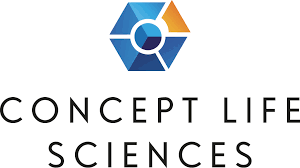Concept Life Sciences are a CRO specialising in developing and conducting translational cell based models. They support clients’ drug discovery programmes in various therapeutic areas including immunology, immune-oncology, neuroscience and fibrosis. In this presentation, Justyna Rzepecka outlines the CRO’s work on the discovery, modelling, AI driven analysis of macrophage-targeted therapeutics.
Rzepecka first outlined the importance of macrophages as immune cells. They are integral to the innate immune system and orchestrate various immune responses. Macrophages are found in virtually all tissue types and organs and highly adapted therein, cooperating and interacting with other cell types both immune and non-immune.
Tumour associated macrophages (TAMs) are extremely prevalent in tumour microenvironments, making up as much as 80% of tumour stroma. Unfortunately, rather than doing their job of fighting the tumour, TAMs can often promote malignancy, affecting cancer progression and immune response.
As a result, drug developers have tried several strategies to target TAMs for therapeutic effect. These approaches include depleting TAMs from tumour microenvironment, reducing their migration towards tumour, or reprogramming their pro-tumour properties to anti-tumour properties.
TAM targeting has shown promise preclinically, but translation to humans has been difficult due to the differences between mouse models and human biology. Therefore, Concept Life Sciences has worked on developing in vitro human macrophage models to better replicate patient tumour biology to aid the development of TAM-targeting drugs.
The presentation discussed the differentiation of monocytes into M1-like and M2-like macrophages, which exhibit distinct functional and morphological characteristics. The CRO used various assays to assess the response of macrophages to treatments, including their ability to modulate T cell activation and cytokine release.
The study leveraged bulk transcriptomics and AI/ML technologies to analyse gene expression across different macrophage subsets, revealing transcriptional similarities and differences. The validated cell-based models can facilitate compound screening and enhance the drug discovery process, emphasising the importance of integrating AI-driven approaches.

